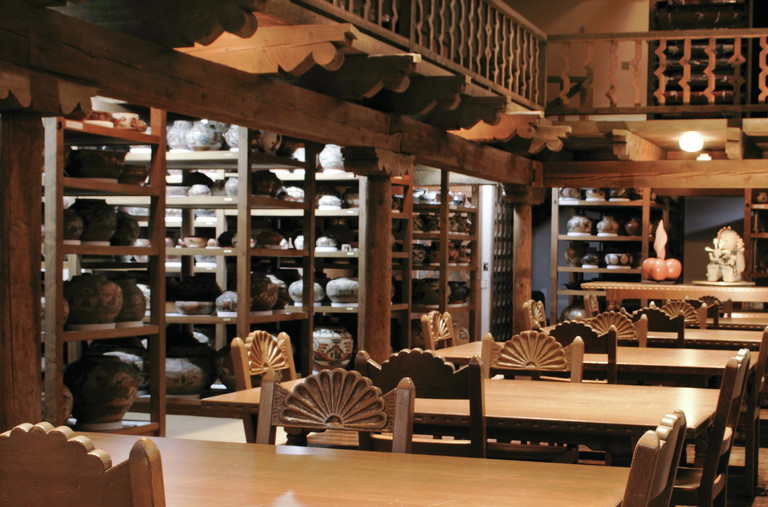MUSEUM MUSINGS
Grounded in Clay:
The Spirit of Pueblo Pottery

IARC Education Staff
Grounded in Clay: The Spirit of Pueblo Pottery is the first Native American community-curated exhibition at the Metropolitan Museum in New York City. The exhibition gives voice to the Pueblo Pottery Collective, a group of sixty Native American curators who selected and wrote about works in clay from the School of Advanced Research’s (SAR) Indian Arts Research Center (IARC) in Santa Fe, New Mexico, and the Vilcek Foundation in New York City.
Grounded in Clay first opened on July 31, 2022, at the Museum of Indian Arts & Culture in Santa Fe. The exhibition will be in New York City until June 2024, then travel to Houston and Saint Louis.
An Interactive Exhibition
The creativity of the installations makes this exhibition truly unique. Narratives, written or spoken, are provided by the Pueblo Pottery Collective. Audiences from around the world will experience those voices via the beautiful catalog (now available at the Met and the Vilcek Foundation), the documentary video, the written display narratives, and the inventive QR codes that connect each display to audio and video content from the curators.
While the lifeways of Pueblo peoples are rooted in the Southwestern United States, we believe that Pueblo ideals can be made accessible to anyone, no matter where they live.
The Grounded in Clay Curriculum
The comprehensive and free curriculum based on the exhibition will be of special interest to art educators. The K–12 lesson plans included in this curriculum guide are intended to teach about Pueblo pottery and its history and encourage students to understand how objects can hold and carry stories. Through process-driven art activities, students can engage in inquiry and in practices that are aligned with Pueblo artistic traditions and cultural values. You can download the entire curriculum as a PDF or as individual lessons.
While the lifeways of Pueblo peoples are rooted in the Southwestern United States, specifically in New Mexico and surrounding areas, we believe that Pueblo ideals can be made accessible to anyone, no matter where they live.
We invite you to deepen your understanding of Pueblo pottery regardless of your age, ethnicity, culture, gender, or learning environment. The lesson plans in this guide are tailored for K–12 classrooms and can be adapted according to individual needs.
Each lesson is based on one of four themes in the exhibition: utility, elements, connections through time and space, and ancestors. Together, they tell a story about the who, what, where, when, and why of Pueblo pottery. When taught in sequence, each lesson builds upon previous lessons, but they can also be taught as standalone lessons.
Learn more about this curriculum here.
About the Indian Arts Research Center
The Indian Arts Research Center is a division of the School of Advanced Research. The goal of IARC is to bridge the divide between creativity and scholarship by supporting initiatives and projects in Native American studies, art history, and creative expression that illuminate the intersections of the social sciences, humanities, and the arts.
This is accomplished by providing fellowship opportunities for artists to engage in uninterrupted creativity; fostering dialogue among artists, researchers, scholars, and community members through seminars and symposia; nurturing future arts and museum professionals through experiential training; and promoting study and exploration of the IARC collection of Native American arts.
The IARC collection is considered by many to be one of the most remarkable assemblages of Southwestern Native American art in the world. Representing a broad range of works, this unique collectionʼs foundation was initially formed in 1922 and has since grown to over 12,000 items.
The stewardship of this collection continues to be a primary focus of IARC to maintain it for future generations. Collections care currently focuses on integrated pest management, preventive conser vation, environmental monitoring, and mount-making for objects.
Anytime you are in Santa Fe, you can contact the IARC to arrange a visit to the collection. To reserve a tour, call (505) 954-7205.